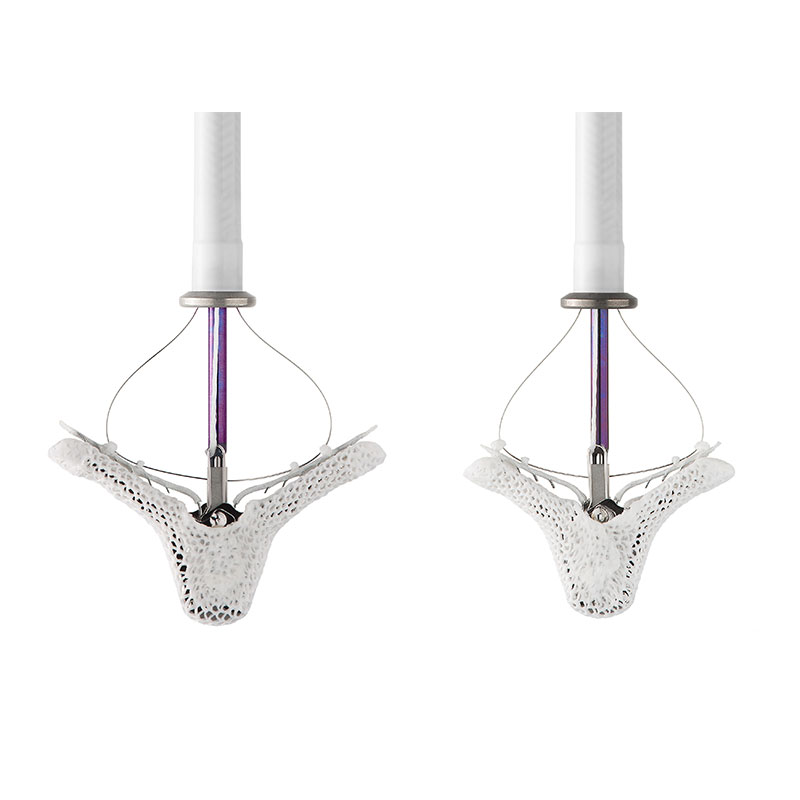
MitraClip is a medical device used to treat a heart condition called mitral regurgitation. It’s a minimally invasive procedure where a small clip is attached to the mitral valve in the heart to help it close properly. This can improve the heart’s function and reduce symptoms like shortness of breath. It’s often used for patients who are not good candidates for traditional open-heart surgery.
How Mitraclip Is Done
* Preparation: The patient is usually given anesthesia to make them unconscious during the procedure. This can be done through a small incision in the groin (transfemoral) or sometimes through a puncture in the chest (transapical).
* Guidance: Using special imaging techniques like echocardiography, the doctor guides a catheter (a thin, flexible tube) through the blood vessels to reach the heart.
* Clipping: Once the catheter is in the right place inside the heart, the MitraClip device is attached to the mitral valve. The clip is designed to bring together the valve leaflets, reducing the backflow of blood (mitral regurgitation).
* Assessment: The doctor assesses the clip’s placement and function using imaging to ensure it’s working properly.
* Completion: If the procedure is successful and the mitral valve now functions better, the catheter is removed, and the incisions are closed.
MitraClip is considered a minimally invasive procedure because it doesn’t require open-heart surgery, which means shorter recovery times and fewer complications for many patients with mitral regurgitation. However, it’s essential to consult a healthcare professional for specific information about the procedure and whether it’s suitable for a particular patient’s condition.
Watch the video below to learn more about the procedure.
Procedures
Procedures
Procedures
Procedures
Procedures
Procedures
Procedures
Procedures
Procedures
Procedures
Procedures
Dr Pipin Kojodjojo specializes in cardiac electrophysiology and management of heart rhythm disorders in both adolescents and adults.
Experienced in managing patients with atrial fibrillation and unexplained blackouts (syncope).
Dr Chuang Hsuan-Hung is a heart failure intensivist trained in advanced cardiovascular imaging. He specialises in heart failure and heart transplant intensive care.
Experienced in managing genetic heart disease, cardio-oncology and sports cardiology.
Dr Stanley Chia is an interventional cardiologist with a distinguished academic record.
He is skilled and experienced in managing complex cardiovascular disease and difficult coronary interventional procedures like stenting of the left main artery.
Dr Jeremy Chow is an electrophysiologist specialising in the implantation and management of electronic cardiac devices.
Experienced in arrhythmia management, stroke prevention and trained in procedures such as electrophysiology studies and ablations.
Dr Tan Chong Hiok is an interventional cardiolgist trained and specialises in stenting of the left main artery and chronic total occlusion.
He is experienced in managing complex cases in patients who have declined or are unsuitable for bypass surgery.
Dr Goh Ping Ping is an echocardiologist trained in imaging of the heart.
She is a strong advocate of preventive cardiology and awareness for women’s heart health. She manages a broad spectrum of cardiovascular disease including heart attack patients.
Dr Chan Wan Xian is a heart failure intensivist specialised in managing complex heart failure and patients with mechanical hearts.
Trained in cardiac imaging and she is experienced is treating women at risk of heart disease, especially during pregnancy.
Dr Edgar Tay is an interventional cardiologist specialised in structual heart disease, adult congenital and pulmonary hypertension.
Trained in procedures like TAVI, Mitralclip and pulmonary angioplasty for chronic thromboembolic pulmonary hypertension.
Dr Cliff Wong is an echocardiologist trained in imaging of the heart.
He specializes in cardiac imaging (echocardiography and cardiovascular computed tomography). Experienced in managing cardiomyopathy, heart failure, valvular heart diseases and cardio-oncology.